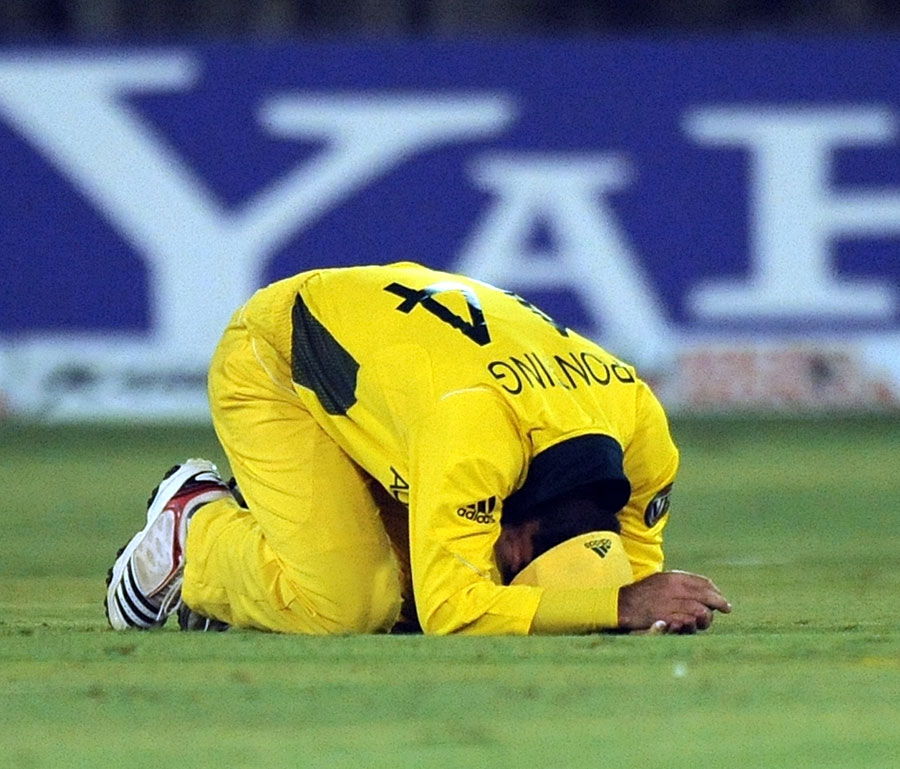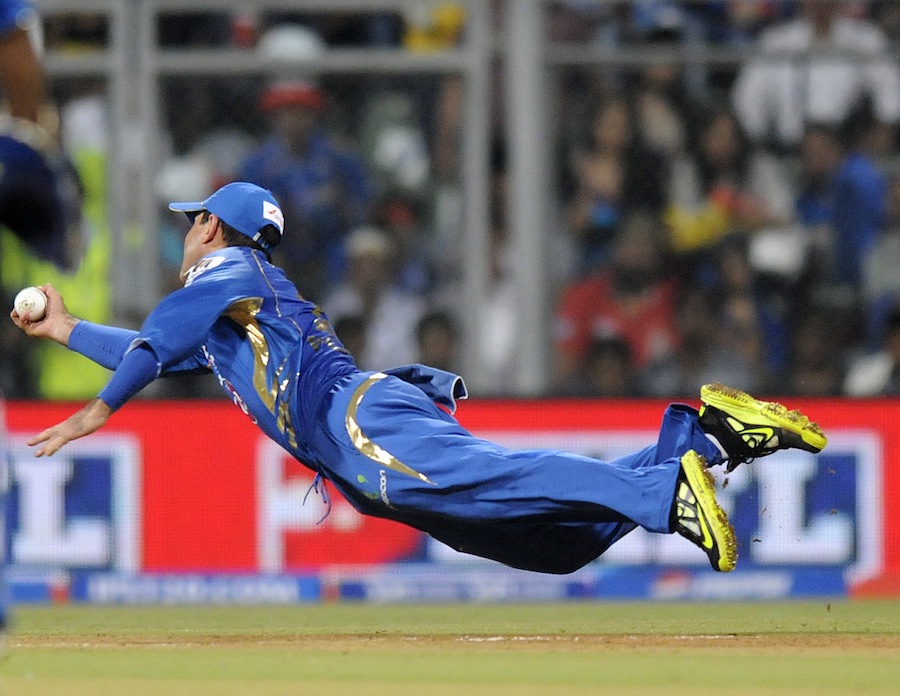CWC Final Preview: Why India start favorites
By Anil - 20 March 2003
March 21 2003
The finalists of the 2003 World Cup are, quite predictably, the two teams that have been head and shoulders above the rest of the field in the tournament: India and Australia. But who has the edge going into the final? Fans of cricket across the world can expect to see a cracker of a Cricket World Cup final on Sunday March 23 in the Wanderers stadium in Johannesburg, South Africa, a clash between the two top teams in the world: India and Australia.
These two teams have outclassed their opponents along most of the way, and while I had expected to see the two of them in the finals, the contest may not be as even as may have been anticipated when the tournament began.
Peaking and troughing
Winning a major tournament is all about hitting your best form in the most important games, and getting progressively better as the tournament moves along.
India, after an indifferent start caused primarily by a lack of initial form after a poorly-organized tour in New Zealand on underprepared pitches which were widely considered unfit for international matches, improved steadily as they went along, going from strength to strength in every department of the game and
easily defeating most opponents in an unbeaten string of 8 matches.
Australia, which started strongly enough, have sputtered and struggled on their way to the final, managing to recover to win their games by unconvincing margins against weak teams as they neared the final.
England, New Zealand, Kenya
Australia were in deep trouble against 3 teams, looking to be out of the game until weaknesses in those teams allowed the Aussies to scratch their way out of trouble.
England: Chasing a target of 204 against England, Australia stumbled to 135/8 in over 38. Poor captaincy by Hussain allowed the Australian lower order to scrape out of a near-certain loss. Only England could have let this happen against their nemesis.
New Zealand: Australia crashed to 84/7 in over 27 batting first against their neighbors. The weak New Zealand secondary bowlers and then their batsmen allowed Australia to dig themselves out of this impossible situation.
Kenya: Most shocking of all, Australia were looking at an embarassing loss against these minnows, falling to 117/5 chasing a target of 175 -- after they had failed to dismiss the Kenyan lineup in 50 overs! They should have lost to any decent bowling attack after this, but could scramble their way out due to rank weak bowling, weakened even further by Kenya resting two bowlers ahead of their semifinal match!
Apart from the above, Australia looked in trouble in the semifinal against Sri Lanka, who bowled them out for a very gettable 212 and were going great guns for the first 3 overs, until spineless Lankan batting and rain finally ended that match.
By comparison, India pulled off emphatic and overwhelming victories against each of the above 4 teams.
The Aussie team
Australia have lost some of their key players since the start of the tournament: Jason Gillespie, far and away the best of their pacemen, injured himself halfway through the tournament and dropped out. Shane Warne, their best and most successful bowler, was banned at the start after testing positive for banned drugs. Damien Martyn, a key ODI player, was injured in the last match.
Finally, shrewd ex-captain Steve Waugh was not selected, a tremendous blow as his replacement Ricky Ponting is seen as a shallow thinker both on and off field.
The Aussie bowling attack is unlikely to give too much trouble to the India lineup. Much-touted veteran Aussie medium-pacer Glen McGrath has looked out of sorts at this tournament. Although the aging warhorse has bowled his heart out, he has been unable to attack batsmen, instead preferring to bowl at a spot just short of the wide line, challenging batsmen to hit him rather than bowl an attacking line. This strategy has seen him end up wicketless against teams such as Kenya and Holland, a demoralizing performance from a strike bowler, to say the least.
Brett Lee has picked up wickets against the weaker teams primarily with pace, but has not been particularly impressive against the better batsmen. His wickets against India in its poorest form at the start of the tournament came off wide deliveries. His performance against England's comparatively weak batting lineup on a bowler's paradise was a pedestrian 9-0-58-0.
Pace alone will buy him little, as the faster Shoaib Akhtar found out against India. Andy Bichel, a journeyman who is normally not in the frame for their ODI team, and works hard at his 135 Kph stock delivery, can expect to be handled roughly by India's batters. Finally, the 4th and 5th bowlers will have no refuge --
the likes of Hogg, Symonds and Harvey are liable to be tonked around the park mercilessly.
Batting-wise, Australia has a strong top order and a notoriously weak middle order, prone to collapse.
This Cup, the top order -- with the likes of Hayden, Gilchrist, Ponting -- has been weak and has gone down against some of the weakest bowling attacks around. Bowling as strong as India's will not allow Australia to recover from the disastrous positions it has found itself in time and again, reduced to depending on their lower order for most of their runs.
Finally,
the Australian side is now packed with bits-and-pieces playes who are short of international class, even if they have done well against the weaker sides - names such as Bichel, Harvey, Symonds. These players are unlikely to do well against world-class opposition.
Indian strengths
The batting has looked world class and justified their billing as the best lineup in the world. Top guns Sachin Tendulkar and Sourav Ganguly have fired, and are
placed at number 1 and 2 respectively for the Man of the Tournament award, far ahead of any of the Aussies, who trail teams that have already been eliminated. The explosive and aggressive Virender Sehwag has not really got going at the same level, which will have the Aussies concerned since he will want to rectify that in the final. Rahul Dravid and Mohammed Kaif have been characteristically solid and reliable, finishing more than one match calmly. Yuvraj Singh has played match-winner a few times already, and is raring to repeat in the final: almost invariably, he tends to come good under the most pressure. Dinesh Mongia, who was adjudged international ODI batsman of the year last year, did well in the first game of the tournament and will work hard to make his presence felt at the Wanderers.
Ganguly, who has one of the world's best records as an opener in ODIs, is back in form and once he settles down,
Lee and company will find that short-pitched bowling to him will be milked for runs. The bad news for Australia will be that their obsession with the best batsman in the world, Sachin Tendulkar, may hurt them because of the deep lineup of top-class batsman who are ready to take over when Tendulkar leaves.
The fast bowling has been a revelation. The troika of
Javagal Srinath, Zaheer Khan, and Ashish Nehra have not only been the
most successful and destructive pace battery in this Cup, outdoing their Aussie counterparts Lee/McGrath/Bichel, but are also the
fastest pace attack, based on peak and average speeds captured on the tournament speed guns.
Several ex-players and other team captains have admitted that the Indian pacemen look as good as, if not slightly ahead of, the Aussies.
Harbhajan Singh, the lone specialist spinner, hasn't been called upon as much as he was in the past, but has looked very good when he has. Part-time spinners like Yuvraj, Mongia, Sehwag, and Tendulkar have delivered the goods time and again when the captain has thrown the ball to them. Ganguly himself has been reluctant to send down his medium-pace stuff much after his triple strike in the match against Zimbabwe.
The fielding for India has been lively and efficient. Yuvraj and Kaif have led the way, with Kaif delivering the runout of the World Cup against Knight of England and both taking splendid catches, and the likes of Mongia, Sehwag, and Tendulkar have also excelled. Even the rest of the fielders have been inspired by them, and shown a commitment in the field that has not been seen in an Indian outfit for a long time, throwing themselves at boundary lines, taking blinders, and firing in quick returns.
Finally, the captaincy of Sourav Ganguly may be the best seen from any captain here, and he is perhaps in the best "captaincy form" of his life. His fielding placements, bowling changes, and handling of the team have been superb, and he is now earning accolades even from his many critics, some of whom have had a beef with him due to his assertive, no-nonsense, and aggressive style.
Stadium support
With India's resurgence in this tournament, cricket writers across the globe have lauded India for winning with grace and without arrogance. The common refrain is that it IS possible to be champions without being hated. This time around, it's going to be the good guys versus the bad guys.
As a result, this Sunday March 23, not just the half of the Wanderers stadium filled with India supporters will be rooting for India, but the other half filled with South Africans and fans of teams other than Australia, will be cheering on India too.
Because the Australians have inherited a reputation as graceless winners, audiences across the world would dearly like to see what they look like as losers.
Superstition or Precedent?
Eerily, Australia is currently on a 16-win streak in ODIs.. exactly the same streak they had going in Tests when it was abruptly and decisively ended by India during the historic Test series between the two teams in 2001. At the time, Steve Waugh referred to India as the Final Frontier because Australia has been repeatedly unsuccessful in winning away against India --
Ponting may find the upcoming final just as impossible to win!
Kenya compared to Australia
If one examines how Kenya has played and prospered in this tournament, it becomes startlingly obvious which team the Kenyans most resemble: Australia!
Like the Aussies, the Kenyans are big on effort, high on discipline, committed on fielding, but light on talent. Clearly the Aussies have more talent (apart from having a big edge on the sledging aspect), but the comparison is valid. Little wonder then, that the Aussies came so close to losing their match against the Kenyans -- a mirror image of themselves, if at a much lower scale!
A solidly professional Indian side, packed with some of the best talents in the world, should easily outclass the Aussies.
Bottom line
The Aussies will have to play well above their potential, and the Indians below theirs, for this match to be competitive.
Given that both sides play to potential, the final should be a mismatch: I expect India to win it easily. The 2003 final is likely to be as one-sided as the 1999 one.
http://www.cricketnetwork.co.uk/main/s119/st21964.php






 )
) .
.
 .
.



